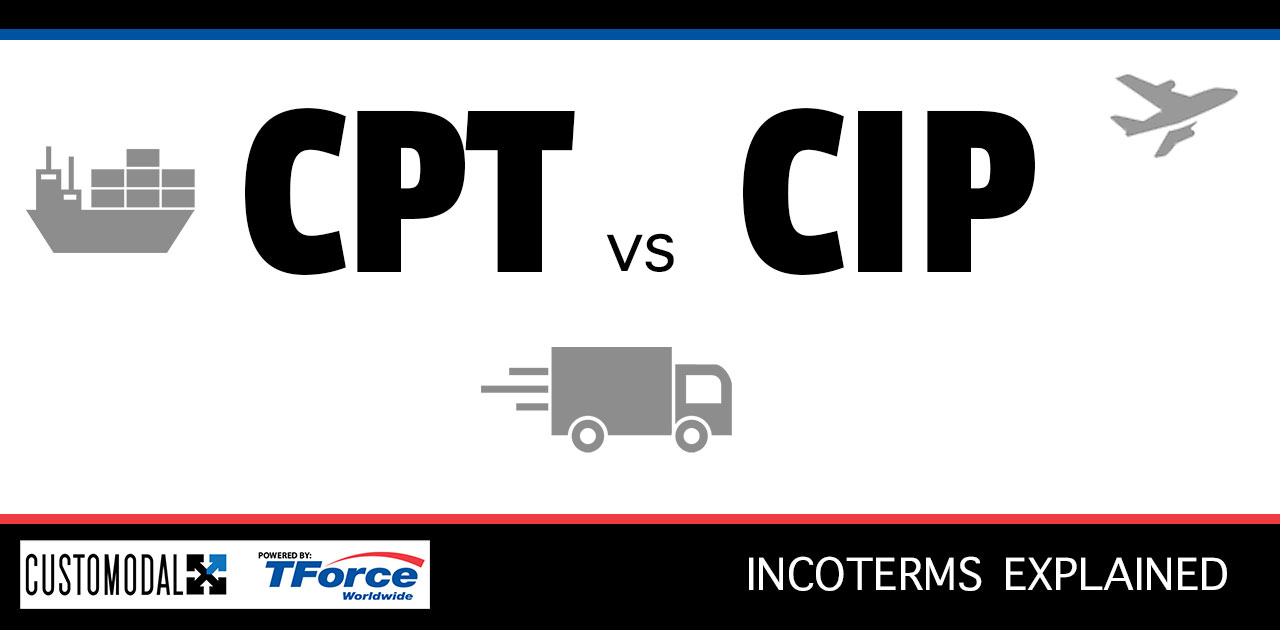Incoterms: The Difference Between CPT and CIP
CPT and CIP Incoterms Explained
Incoterms define the risks and responsibilities of both shipper and consignee in all shipments. CPT and CIP are two similar Incoterms, with one key difference.
There are 11 common Incoterms (international commercial term) to use for your company and choosing which to implement is a strategic decision that can expose or shelter your company from risk and cost. A carrier is any person or company who undertakes the carriage of goods, such as a shipping line, airline, trucking company, railway or freight forwarder.
Carriage Paid To (CPT) is an Incoterm denoting that the seller incurs the risks and costs associated with delivering goods to a carrier to an agreed-upon destination. With multiple carriers, the risks and costs transfer to the buyer upon delivery to the first carrier.
In Carriage and Insurance Paid To (CIP), the seller assumes all risk until the goods are delivered to the first carrier at the place of shipment—not the place of destination. Once the goods are delivered to the first carrier, the buyer is responsible for all risks.
However, with CIP, the seller is responsible for the cost of carriage as well as all-risk insurance coverage until the freight reaches the named place of destination.
CIP includes insurance, while CPT does not. CIP functions the same as CPT, in that the seller is responsible for all of the expenses and risks in delivering goods to a carrier, but with CIP, insurance is added to insure the goods.
As per Incoterms, CPT means Carriage Paid to (named destination mentioned). CIP means, carriage and insurance paid (up to the destination mentioned).
Customodal is well-versed in all the Incoterms rules and all shipping terms. Have a question about CIP Incoterms? Contact Customodal today!


